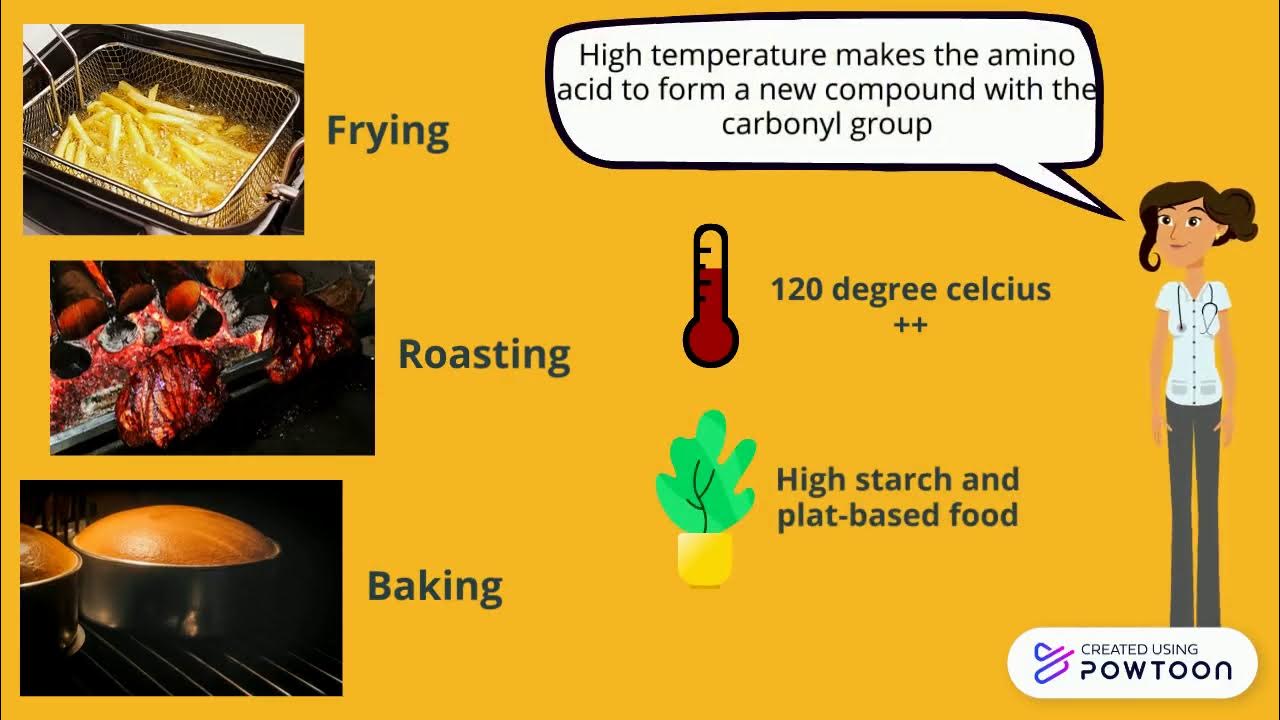The #1 Most Dangerous Ingredient in the World
Summary
TLDRThis video discusses acrylamide, a dangerous byproduct created during food processing, specifically when refined sugars and proteins are exposed to high heat. Acrylamide is classified as a probable carcinogen and a potent neurotoxin that can also damage reproductive organs. The video provides practical advice to reduce acrylamide exposure, including using saturated fats for cooking, opting for natural sugars, and pairing foods with protective compounds like cruciferous vegetables, garlic, and green tea. It also offers tips for minimizing acrylamide in coffee. Overall, the video highlights the risks of ultra-processed foods and emphasizes the importance of mindful eating.
Takeaways
- 😀 Acrylamide, a byproduct of cooking certain foods at high heat, is considered a class A carcinogen and a potent neurotoxin.
- 😀 This harmful chemical is created when a protein reacts with refined sugars (like glucose or dextrose) under high heat.
- 😀 Acrylamide is found in over 40% of processed foods, including french fries, chips, baked goods, cereals, and even roasted coffee.
- 😀 Saturated fats, like those from beef fat (tao) or coconut oil, help reduce the formation of acrylamide when cooking.
- 😀 Before the 1990s, McDonald's fries were cooked in beef fat, which prevented the creation of acrylamide, unlike current cooking oils.
- 😀 Foods with refined sugars, such as glucose syrup and starches, contribute significantly to the production of acrylamide.
- 😀 Cruciferous vegetables (like kale, broccoli, and Brussels sprouts) and garlic help neutralize acrylamide's effects.
- 😀 Foods rich in vitamin C (like citrus and bell peppers) and green tea also offer protection against acrylamide toxicity.
- 😀 To minimize acrylamide in coffee, opt for dark roasted or espresso coffee, as light roasting contains 10 times more acrylamide.
- 😀 The Maillard reaction, which produces acrylamide, involves an amino acid (asparagine) from grains, corn, and soy reacting with refined sugars at high temperatures.
Q & A
What is the most dangerous ingredient mentioned in the video?
-The most dangerous ingredient mentioned is acrylamide, which is considered a class A carcinogen and a potent neurotoxin, causing damage to nerves, the brain, and reproductive organs.
Why is acrylamide a significant concern for human health?
-Acrylamide is a potent neurotoxin and is classified as a probable carcinogen for humans, which means it can increase the risk of cancer and cause damage to the nervous system and reproductive organs.
How is acrylamide created in food?
-Acrylamide is created when a certain protein combines with refined sugars (such as glucose, dextrose, or glucose syrup) under high heat, typically during food processing like frying or baking.
What are some foods that commonly contain acrylamide?
-Common foods that contain acrylamide include corn chips, potato chips, french fries, baked goods, crackers, cookies, breakfast cereals, bread crusts, and roasted coffee.
What is the role of saturated fats in reducing acrylamide formation?
-Saturated fats, like those from beef fat or coconut oil, prevent the formation of acrylamide. This is why McDonald's fries, when fried in beef fat (taow) before the 1990s, did not contain acrylamide.
Can we reduce acrylamide formation in coffee?
-Yes, acrylamide formation in coffee can be reduced by drinking organic dark roasted or espresso coffee, as these are roasted at higher temperatures, making acrylamide unstable and breaking it down.
How can we neutralize or protect against acrylamide in food?
-To neutralize acrylamide, you can pair foods with cruciferous vegetables like kale, broccoli, or Brussels sprouts, or foods high in vitamin C like citrus, bell peppers, and sauerkraut. Green tea and spirulina can also provide protective effects.
What specific amino acid is involved in the formation of acrylamide?
-The amino acid involved in the formation of acrylamide is asparagine, which is found in foods like corn, wheat, rice, and soy. When combined with certain refined sugars and exposed to high heat, acrylamide forms.
What is the Maillard reaction, and how does it relate to acrylamide?
-The Maillard reaction is a chemical reaction between proteins and sugars that occurs when exposed to heat. This reaction is responsible for the creation of acrylamide when specific sugars and proteins, like asparagine, combine at high temperatures.
What is the impact of ultra-processed foods on health?
-Ultra-processed foods contribute to a significant portion of calories in modern diets, and they are a major source of harmful substances like acrylamide. Over 50% of an adult's calories and 67% of a teenager's calories come from ultra-processed foods, which can increase the risk of diseases like cancer.
Outlines

Esta sección está disponible solo para usuarios con suscripción. Por favor, mejora tu plan para acceder a esta parte.
Mejorar ahoraMindmap

Esta sección está disponible solo para usuarios con suscripción. Por favor, mejora tu plan para acceder a esta parte.
Mejorar ahoraKeywords

Esta sección está disponible solo para usuarios con suscripción. Por favor, mejora tu plan para acceder a esta parte.
Mejorar ahoraHighlights

Esta sección está disponible solo para usuarios con suscripción. Por favor, mejora tu plan para acceder a esta parte.
Mejorar ahoraTranscripts

Esta sección está disponible solo para usuarios con suscripción. Por favor, mejora tu plan para acceder a esta parte.
Mejorar ahoraVer Más Videos Relacionados
5.0 / 5 (0 votes)






